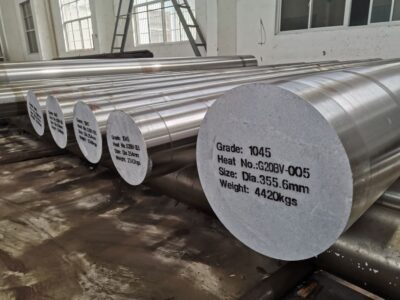-
 Call Now ! +86 13390692151
Call Now ! +86 13390692151 -
 Email Now sale@kfqizhongji.com
Email Now sale@kfqizhongji.com


SAE1045 round bar is a high-strength carbon quenched and tempered steel,which has a certain degree of ductility and toughness,high strength,good machinability. the use of quenching and tempering can get a good comprehensive mechanical properties.We keep at 1000 ton SAE1045 round bars inventory per month,and can provide you the best quality service,the following together to know about our SAE1045 round bar size and production process.

Chemical content of ASTM SAE1045 round bar:
C:0.42-0.49;Si:0.17-0.37;Mn:0.60-0.90;S≤0.035;P≤0.035
Diameter:10-300mm;length:as requirement
Mechanical Property:yield strength(MPa)≥835;tensile strength(MPa)≥685;elongation (%)≥12
Technique:hot rolled
Surface treatment:galvanized,black,polishing
Inspection:Third party inspection service can be offered like SGS,BV and so on
Packaging details:standard sea worthy package or as requirement
Application:mechanical&manufacture,steel strcuture,shipbuilding,bridging,automobile chassis
If you are looking for the appropriate SAE1045 structural round bar stock, please feel free to contact us, we will take strict SAE1045 steel round bar product quality supervision to ensure that customers provide the best quality and cheap products, if you need, please contact us.